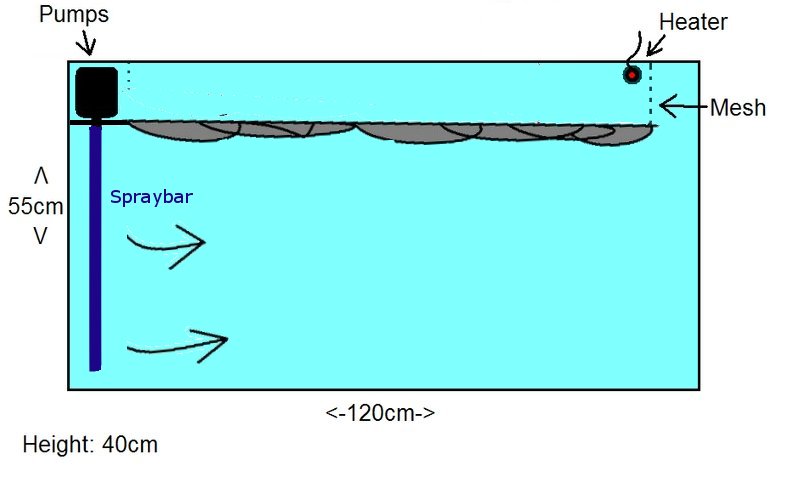Ok, back to planning again. This time it will be done, we're moving so time for some plumbing. Came to the conclusion that I'll stick with the old tank. Got me a second Hydor Seltz L45II pump (
http://www.marinedepot.com/md_viewItem. ... ct=HD10202), because I have the PVC pipes that fit to it. Made a really bad picture of the plan, hope you get some idea of where I'm going with it. There's no real scale to the picture, paintbrush isn't really the best program for blueprints

UP and SIDE-views

As drawn in the picture the outlet is not holes but horizontal cuts, made some experimenting with different types of outlet holes and liked this option the best. Also placing the pump and sponges at one end and only pipes sticking out in the other end, which can be easily camouflaged. At the same side as the pump there will be a embankment where
Pogostemon helferi will be planted. As you can guess the empty gap between the outlet and embankment will be filled with rocks, LOTS of rocks. Other technique will be an air pump and the EHEIM outer filter, no heater. The only problem now is the embankment, how would be the best way to build it so the sand wont flow out. Considering rocks and stockings filled with sand. Have 4 weeks to figure things out.

 Resistance is futile. You will be assimilated.
Resistance is futile. You will be assimilated.




